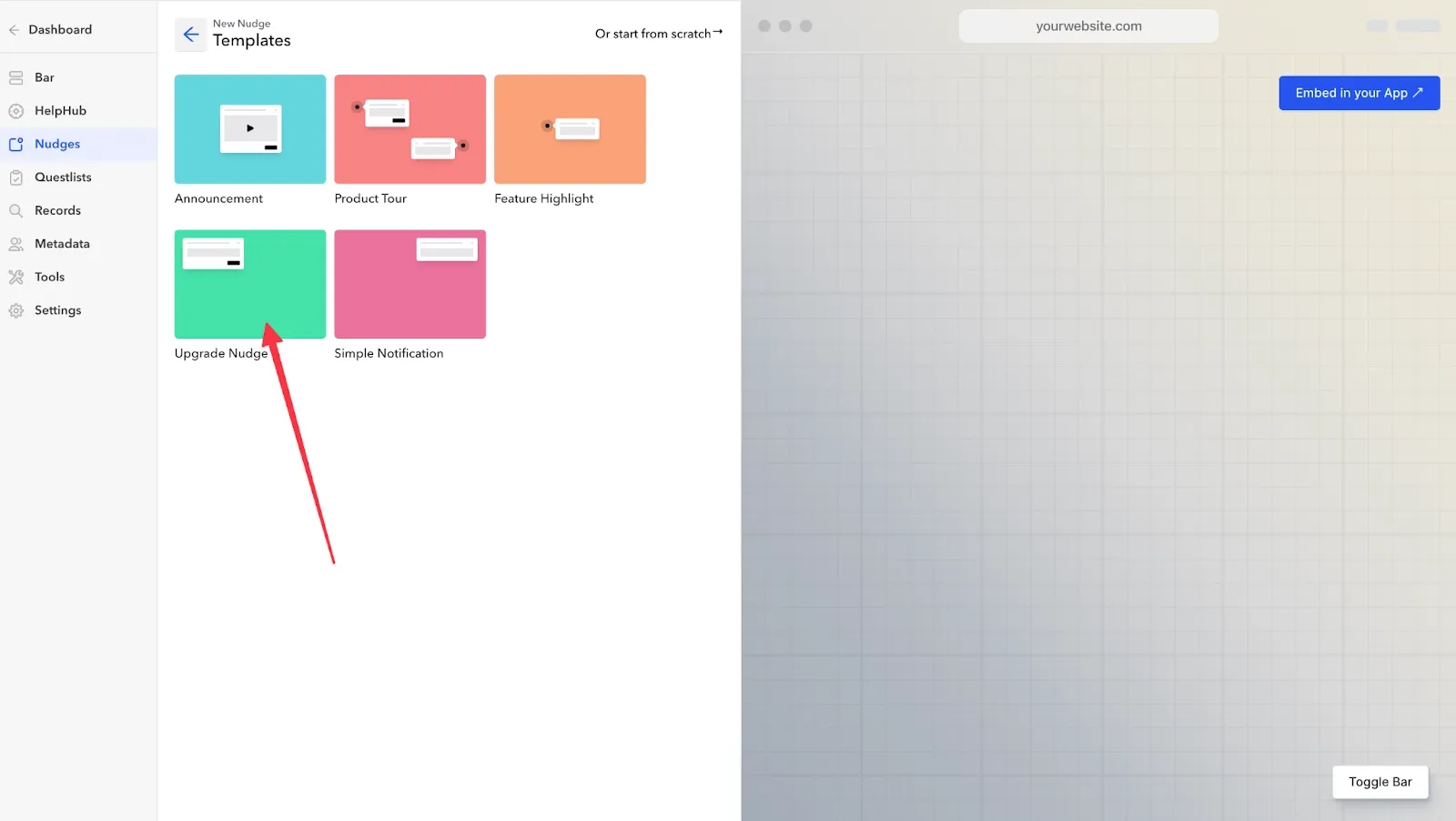You've probably been upsold at a restaurant. I've had this happen recently: I sat down at the table, expecting to have a regular dinner: Share an appetizer, have an an entree, maybe a glass of wine.
But when the appetizer came, we stopped resisting the waiter's recommendation. Yes, let's squeeze in the artichokes before our main course and sure, I'll do the Chardonnay if it pairs that well with the halibut. Cheese platter? Sure. Dessert? My cheat meal isn't until tomorrow, but screw it.
I spent twice the money I thought I would, and I loved every minute of it.
That first appetizer is an a-ha moment: Where you realize just how good the restaurant is—suddenly I'm getting whatever else they offer. The same way my willingness to spend money went up after the appetizer, your user's willingness to upgrade skyrockets once they have their aha moment.
Product-led Growth (PLG) conversion rates are typically really low — like, low single digits. To drive more conversion, product, growth, and marketing teams should take advantage of “aha!” moments.
“Aha!” moments, also known as magic moments, refer to the time when a user understands the value of a product or feature. It typically follows a key product usage moment; when having used a feature, the user suddenly realizes the usefulness of that software tool.
For example, in Figma, that might be the moment that a user invites a friend or colleague and can experience true multiplayer collaboration (which is one of Figma’s key selling points).
These moments are growth gold dust. In the seconds and minutes right after a magic moment occurs, your whole product has a halo effect around it. As a result, users are more likely to take a desired action - whether that means signing up, subscribing, or buying. Product-led growth teams should build their user onboarding flows around them and leverage “aha!” moments to drive conversions by nudging users with a call to action. Or, you can use this opportunity to capture user feedback, which can then be leveraged to create personalized experiences that increase the likelihood of a future conversion.
With a specially tuned nudge in CommandBar, you can take advantage of these magic moments and encourage users to convert right in your app. The more custom you make them, the better they will perform. Let’s look at how.
Key Takeaways
- Importance of 'Aha!' moments: These are pivotal instances when a user realizes the value of a product or feature, often after a key usage moment. For PLG, these moments can significantly boost conversion rates.
- Defining 'Aha!' moments: Identifying these moments is crucial. They should be specific to your product and resonate with users' experiences, like the multiplayer collaboration in Figma.
- Leveraging CommandBar for custom nudges: CommandBar can be used to create personalized nudges at these 'aha!' moments, prompting users to take desired actions like upgrading or providing feedback.
- Steps to optimize nudges:
- Define the moment: Clearly identify the specific magic moment for each user interaction.
- Create engaging nudges: Tailor the nudge’s title and body to reflect the user's recent experience.
- Specify actionable steps: Clearly define what action the nudge should prompt, like visiting a pricing page or enrolling in a trial.
- Set audience and trigger: Determine who should see the nudge and under what conditions, using precise triggers and audience segmentation.
- Examples of effective nudges: From Grammarly's user onboarding to Airbnb's booking process, timely nudges can significantly impact user conversion and engagement.
- Focus on time-to-value optimization: Ensuring users quickly realize the value of your product through in-app guides and resources is key to increasing PLG conversion rates.
- Strategic timing: Knowing the 'aha!' moment is just part of the strategy; delivering the right message at the perfect time is crucial, and CommandBar can help streamline this process.
Nudging a user to upgrade in CommandBar
Step 1: Define your “aha” moment
Your product probably has many magic moments. You’ll want to create a nudge specific to each one. A generic upgrade nudge will perform worse than one that is tailored for the magic moment the user just experienced.
The more specific, the better. As we’ll see later on, there are several ways to define a magic moment in CommandBar:
- Specific page
- The presence of an element on the page
- An event from Segment
- A custom event
Step 2: Create your nudge
Create your nudge. From the CommandBar Editor, create a new nudge. You can choose the “Upgrade” template for a headstart.

Next, edit your Nudge to refer to the magic moment you have in mind.
Title: To capture the user’s attention, choose a title that references the action they just completed.
- Good title: “How cool is multiplayer?”
- Bad title: “Check out our paid plan”
Body: Reference the user’s magic moment and link it to a paid plan.
- Good body: “Imagine that but with 10 of your teammates. Our paid plans include more seats so you can turbocharge your editing.”
- Bad body: “Check out our paid plans to see all the features we have to offer”
You can also include an image, video, or help article here.
Step 3: Specify your action
The action is what happens when the user clicks the CTA in the nudge. You have a number of options here.
- Send the user to a pricing page where they can view your plans.
- Enroll the user in a trial with one click.
To send the user to a pricing page, you’ll just need to enter the URL of that page after toggling “action.”
To upgrade the user with one click, you’ll need to create a “command.” A command is an action you can reuse across CommandBar — in any nudge, questlist, or reactive widget like the Bar.
Step 4: Set your audience and trigger
Now that your nudge is created, you need to decide when and to whom it will be shown.
First, the latter. Audience specifies who is eligible to see this nudge. You’ll want to avoid this nudge showing for users who are already on a paid plan. For that, you can leverage metadata.
Next, when. You’ll find this step easier if you have a precisely defined moment. For example, maybe you send the user to a success screen after they achieve the moment. In that case, your trigger could be “the first time the user lands on /success.”
Examples of Magic Moments and Timely Nudges
Stuck for inspiration on how to nudge users after an aha moment? Here are some magic moments in popular apps and corresponding prompts.
Nudging upgrades after user onboarding in Grammarly
New users in Grammarly are shown a demo document filled with deliberate typos and errors that you must fix as part of their user onboarding process. It's a great way to show users how to use the app while demonstrating the value of their tool. Nudging a user to upgrade to a paid plan after fixing all the issues is a perfectly timed prompt to do so - a celebratory GIF meme and congratulatory message can turn the user’s excitement into a conversion action.

Foregoing signup until time to first-value with Airbnb
Airbnb asks for quite a lot of information up-front for new users. This user friction is bound to put off many from signing up, so they delay it - it’s only when you go to book a place you found (and you’re clearly sold on the value they provide!) that you’re prompted to signup.
Offer a discount to sweeten the deal
Copymatic, the AI editor, prompts users after creating their first document with a 24-hour, time-limited offer. They combine honing in on the magic moment of finishing your first article with a discount to drive early upgrades.
Optimize for Time-to-Value
To ensure that users have these “aha!” moments, product-led companies should take the time to understand user behavior and focus on creating experiences that leverage in-app guides and optimize for time-to-value. This could involve providing users with high-value resources or tutorials that help them understand how to make the most of the product's features or offering interactive demos and walkthroughs to introduce them to the product. Ultimately, by providing users with a great experience and helping them understand the value of your product, you can increase your PLG conversion rates and make your product more successful.
But knowing your "aha!" moment is only one part of the puzzle. To really capitalize on a magic moment, you need to prompt the user with the right message at that exact right time. Get started with a demo of CommandBar, or log in and create a nudge now.















